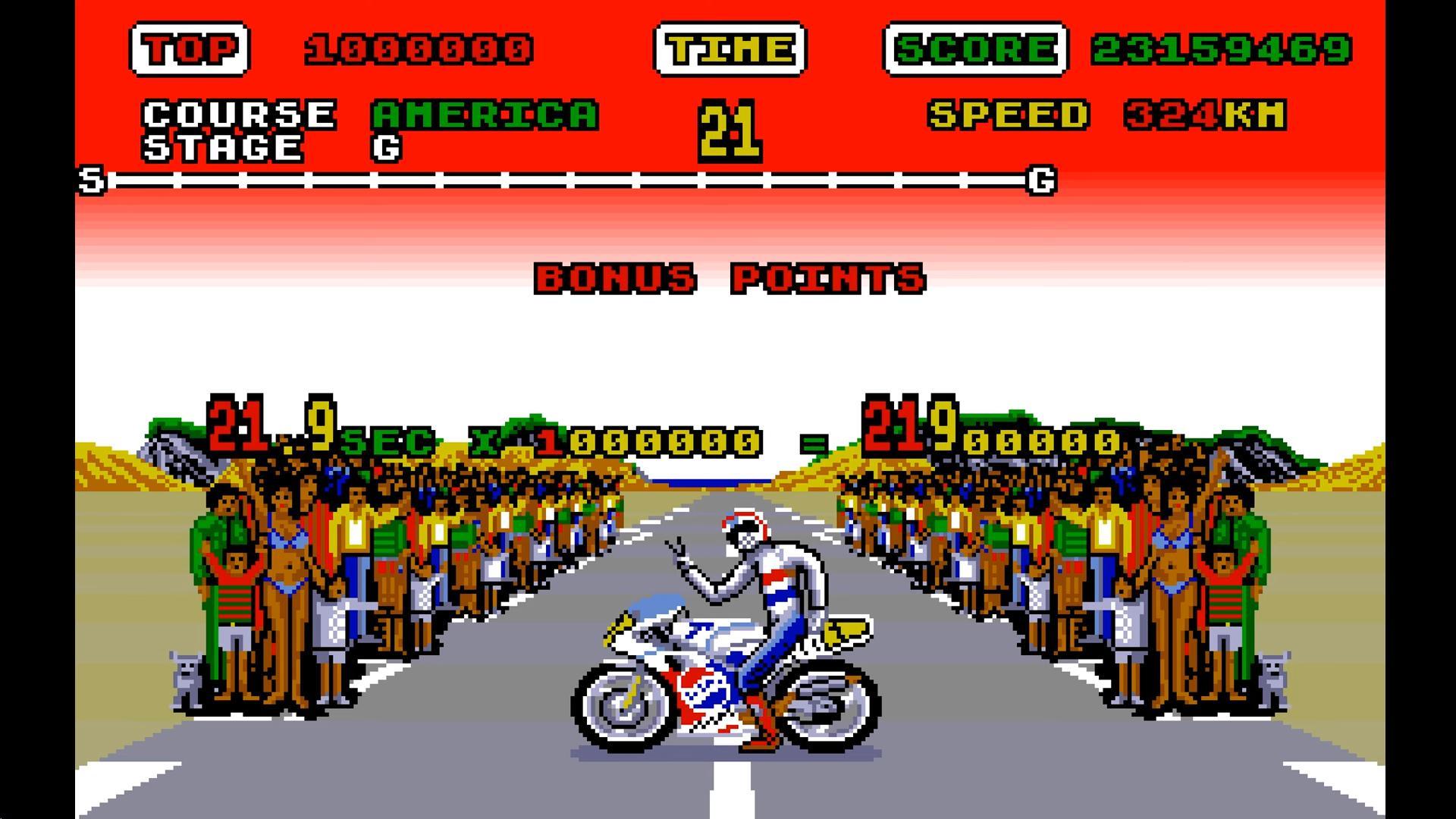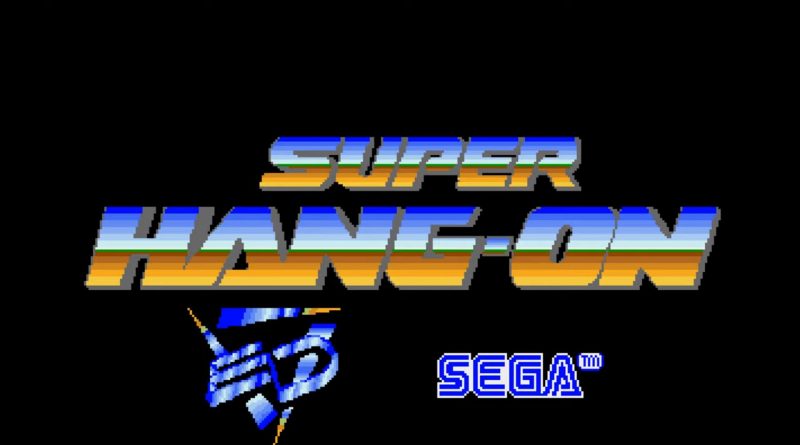All That Blitters – Super Hang-On
I got my first motorcycle, a Honda CB90, when I was in third grade. The bike was so tall and my legs were so short that I had to stand on a pair of milk crates just to get my leg up over the seat. With one milk crate on either side of the bike, I would kick start the engine, drop it into first gear, pop the clutch and aim for the nearest vacant lot. When I was done riding I would return home, slow to a crawl, turn off the engine, coast into our garage and jump off. I grew up just outside the city limits, and almost every kid in my neighborhood owned a motorcycle, go-kart, or (the now shunned) three-wheeler. By the time I got my motorcycle’s license at the age of fourteen, I had owned four bikes and one go-kart.
Since then I’ve owned at least half a dozen different bikes, and only one of them truly scared me. After years of riding normal street bikes, I decided to purchase a sport bike: a Yamaha R1. According to Yamaha’s website, this liter bike has 198 horsepower (more than many cars), weighs around 400 pounds, and accelerates from 0-60mph in less than three seconds. The bike ships from the factory with a governor that limits its top speed to 188mph (302km/h), although the seller I bought mine from assured me the limitation had been removed. It was the first bike I ever owned that would unintentionally send the front wheel up into the air just by twisting the throttle a little too aggressively. That bike wasn’t just fast; it was crazy fast. I occasionally refer to selling that bike as the only adult decision I’ve ever made.
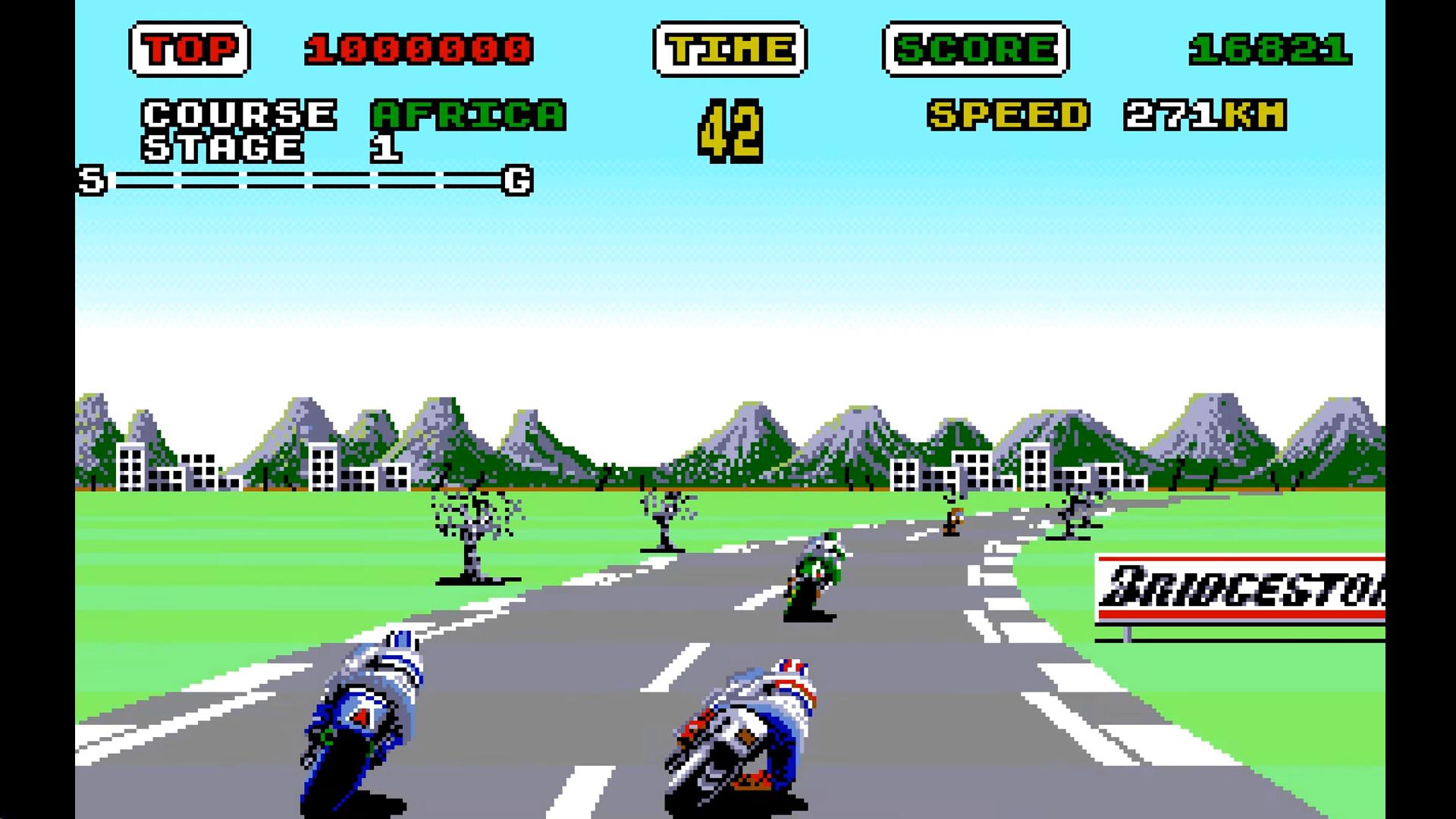
I’ve been playing video games even longer than I’ve been riding motorcycles, and trust me when I say very few early games captured the thrill or excitement of riding a real bike. Games like ExciteBike and Kikstart were fun, but were presented as side scrollers. Plenty of pseudo-3D motorcycle games existed on 8-bit machines too, but few of them were able to scroll quickly enough to truly convey any perception of speed.
Super Hang-On, released in arcades by Sega in 1987, pulled it off. With large colorful sprites and fast-scrolling graphics, the only things missing from Super Hang-On were the smell of burnt rubber and insects hitting you in the face. The stand up version of the game shipped in a cool cabinet with a set of handlebars for controls, but the real magic happened on the deluxe sit down model, which gamers controlled by sitting on a replica of a racing bike and leaning it to the left and right to rip through the curves. Playing Super Hang-On might not have turned teenagers into real motorcycle racers, but while you were leaning that motorcycle into a corner and threading the needle between other racers, it sure felt like it did.

Sega quickly ported its arcade hit to the home computer market and discovered, along with its customers, that many of those machines simply couldn’t handle the demands of the game. Super Hang-On for the Commodore 64, a platform known for delivering quality gaming experiences, looks more like a slideshow of a motorcycle race in a barren wasteland than the thrilling experience found in arcades. Sadly, it was one of the better 8-bit ports.
Super Hang-On fared better on 16-bit computers, and arguably the best version appeared on the Amiga. The story behind the development of the Amiga version is rather infamous. A skilled programmer known as ZZKJ (later outed as Zareh Z. K. Johannes), who had previously worked on 8-bit ports of the game, began writing an unsolicited version for the Amiga. According to legend, ZZKJ offered to do the port in part for a free Amiga. Despite never having coded anything on the platform before, in just over three months time ZZKJ managed to create not only the best home computer port of Super Hang-On, but at the time, one of the best racing games for the Amiga computer.
In Super Hang-On, riders race motorcycles across four different continents on tracks that take them across Africa, Asia, America, and Europe. Each track consists of multiple stages, each of which has multiple changes in scenery and sky that keep things feeling fresh. While the true enemy is the ticking timer that counts down at the top of the screen, riders will not find themselves alone on the track. The other riders on the track have a bit of a kamikaze attitude and will not make passing them easy. Bumping into an opponent slows your motorcycle down, and in Super Hang-On, every second counts.
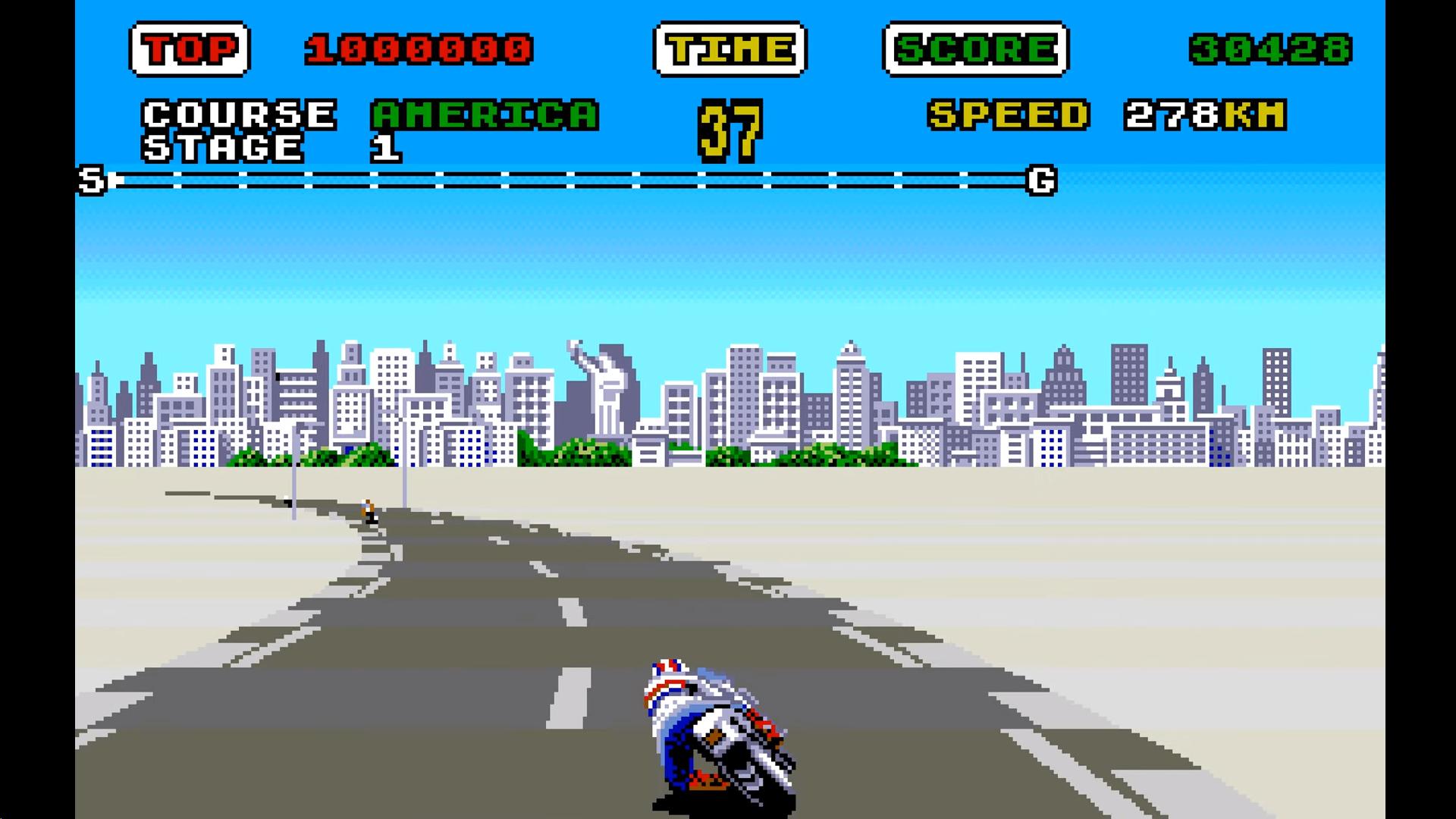
Most everything from the arcade version made it to the Amiga. All the motorcycles are bright and colorful, the landscape is filled with scrolling signs and trees, and there’s even a cool parallax scrolling effect on the horizon. And while the home version of Super Hang-On did not include a pair of handlebars, it does offer three control options: joystick, keyboard, and mouse. Curiously, the mouse setting seems to control the best — just make sure you’ve removed anything surrounding your mouse pad that might spill prior to race time.
Super Hang-On managed to pump music, motorcycle sounds, and game alerts through the speakers all at the same time. The whining of the engine, while borderline grating, sounds a lot like my old bike. The music, a combination of keyboard tuners laid over rock-style drums, is a constant reminder to go fast instead of slow. The occasional beeps informing you that your play has been extended are appreciated, as taking your eyes off the road can be disastrous. This is especially true when using nitrous, which is a good way to make up lost time, and a good way to find yourself separated from your motorcycle if things go wrong.
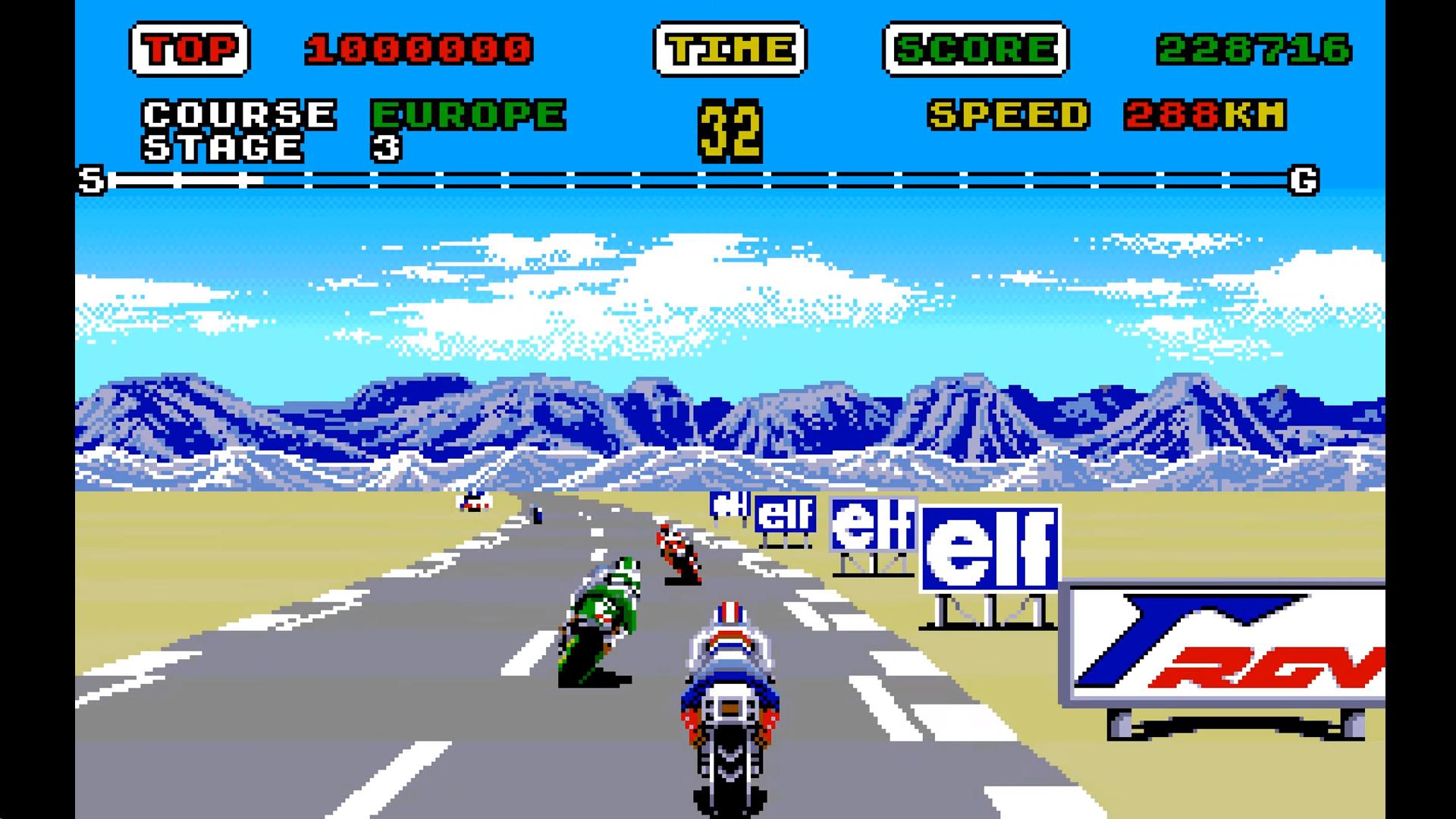
Platform wars were alive and well in the 1980s, and many Amiga owners tended not to compare their games to their arcade sources, but rather the Atari ST. Despite having superior sound and graphic capabilities, many Amiga games were lazy ports of Atari ST releases that didn’t utilize the platform’s custom abilities. In screen shots, the graphics on the Atari ST seem slightly sharper; in music and gameplay, most gamers seem to favor the Amiga. Ultimately both versions pale in comparison to the port released for the Sega Genesis, but removing that version from the mix leaves the Amiga’s in the lead by a nose. Maybe even a tire.
My reflexes aren’t as quick as they used to be. When riding a motorcycle these days I always wear a helmet and take things a bit slower than I did a decade or two ago. In Super Hang-On, there’s no time for slow reflexes or timid throttles. Unless you find yourself skidding toward the shoulder of the road dangerously close to a light pole or cactus, there’s few opportunities for brakes here. You’ll need to go all out to finish each stage and move on to the next. A celebration awaits winners at the finish line. Losers should plan on bringing their own stretcher.
